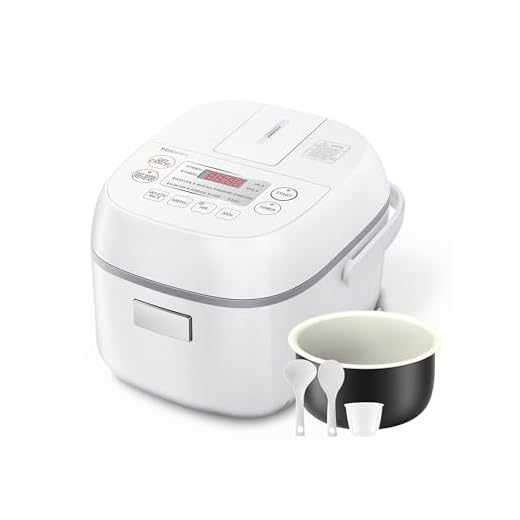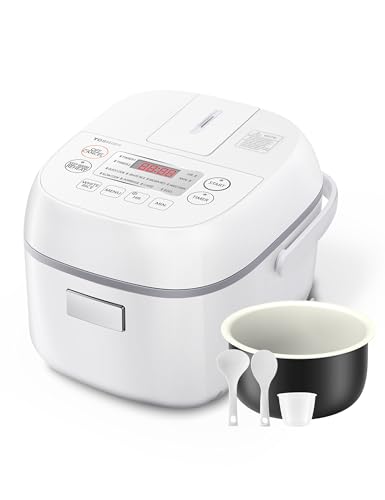


When it comes to food poisoning, one particular bacteria often comes to mind: Bacillus cereus. Although this bacterium is commonly found in various foods, it has a particularly strong association with cooked rice dishes.
Bacillus cereus is a spore-forming bacterium that produces toxins which can cause gastroenteritis, an illness characterized by symptoms such as nausea, vomiting, and diarrhea. It is estimated that Bacillus cereus is responsible for a significant percentage of foodborne illnesses worldwide.
The association between Bacillus cereus and cooked rice dishes is primarily due to the bacterium’s ability to form spores and survive in a dormant state. When rice is cooked, it provides an ideal environment for the spores to germinate and the bacteria to multiply. If the cooked rice is then left at room temperature for an extended period, the bacteria can quickly grow and produce toxins.
It is important to note that reheating cooked rice does not eliminate the toxins produced by Bacillus cereus. Therefore, proper handling and storage of rice dishes are essential to prevent food poisoning.
In order to reduce the risk of Bacillus cereus contamination, it is recommended to cool cooked rice as quickly as possible and refrigerate it within two hours. Additionally, reheating rice dishes thoroughly before consumption can help kill any potential bacteria.
By understanding the link between Bacillus cereus and cooked rice dishes, individuals can take the necessary precautions to protect themselves and their families from food poisoning.
Overview of Bacteria in Cooked Rice Dishes
Cooked rice dishes can be a breeding ground for various types of bacteria. One of the most common bacteria found in cooked rice is Bacillus cereus. This bacterium is commonly associated with food poisoning and is known to cause gastrointestinal problems.
Bacillus cereus
Bacillus cereus is a spore-forming bacterium that can survive the cooking process and can multiply rapidly in cooked rice, especially if it is left at room temperature. The bacteria produce heat-resistant toxins that can cause vomiting, diarrhea, and abdominal cramps if consumed.
Prevention of Bacterial Contamination
To prevent bacterial contamination in cooked rice dishes, it is important to handle and store the rice properly. Here are some key tips:
- Always wash your hands thoroughly before handling cooked rice.
- Cook rice thoroughly and ensure it reaches a safe internal temperature of 165°F (74°C) or above.
- Refrigerate cooked rice within 2 hours and keep it stored at a temperature below 41°F (5°C).
- Avoid keeping cooked rice at room temperature for an extended period, as bacteria can multiply rapidly in this environment.
- Avoid reheating cooked rice more than once, as it increases the risk of bacterial growth.
By following these precautions, you can reduce the risk of bacterial contamination and enjoy safe and healthy cooked rice dishes.
| Bacteria Name | Associated Risks |
|---|---|
| Bacillus cereus | Food poisoning, gastrointestinal problems |
Risks Associated with Bacteria in Cooked Rice Dishes
Cooked rice dishes are delicious and a popular choice in many cultures. However, they can also pose potential health risks if proper food safety precautions are not followed. One of the main bacteria commonly associated with cooked rice dishes is Bacillus cereus.
Bacillus cereus is a common spore-forming bacterium that can contaminate cooked rice dishes when they are not stored or handled properly. This bacterium is commonly found in soil, dust, and various raw foods, including rice. Due to its ability to form spores, Bacillus cereus can survive cooking and properly reheating the rice dishes.
Consuming rice dishes contaminated with Bacillus cereus can lead to food poisoning. Symptoms of Bacillus cereus food poisoning include abdominal cramps, diarrhea, and vomiting. These symptoms typically appear within 6-15 hours after consuming contaminated rice.
To reduce the risks associated with Bacillus cereus in cooked rice dishes, it is important to handle and store the rice properly. After cooking, rice should be cooled quickly and refrigerated within two hours. It is also essential to reheat rice thoroughly before consuming it, ensuring that it reaches a temperature of at least 165°F (74°C).
Additionally, proper hygiene practices should be followed when preparing and serving rice dishes. Washing hands thoroughly before handling cooked rice and using clean utensils and surfaces can help prevent bacterial contamination. It is important to note that reheating rice multiple times can increase the risk of bacterial growth, so it is best to cook and consume rice in smaller batches.
By following these precautions, the risks associated with Bacillus cereus contamination in cooked rice dishes can be minimized, enabling individuals to enjoy this popular and nutritious food safely.
Salmonella: Common Bacteria in Cooked Rice Dishes
When it comes to cooked rice dishes, one common bacteria often associated with them is Salmonella. This bacteria is a leading cause of foodborne illness worldwide, and rice dishes can be a potential source of contamination.
Salmonella is a type of bacteria that lives in the intestines of humans and animals. It can be found in raw or undercooked eggs, poultry, and meat products. When these contaminated ingredients are used in cooked rice dishes, such as fried rice or rice pilaf, the bacteria can survive and potentially cause infection if proper cooking and handling practices are not followed.
Transmission and Symptoms
Salmonella can be transmitted through the consumption of contaminated food or water, as well as through contact with infected animals or their feces. In the case of cooked rice dishes, cross-contamination can occur if raw ingredients, such as eggs or uncooked meat, come into contact with the cooked rice.
Once ingested, Salmonella can cause symptoms such as diarrhea, abdominal pain, fever, and vomiting. These symptoms typically appear within 12 to 72 hours after exposure and can last for several days. In some cases, the infection can be severe and require medical attention.
Prevention and Safe Practices
To minimize the risk of Salmonella contamination in cooked rice dishes, it is important to follow safe cooking and handling practices. This includes:
- Using clean utensils, cutting boards, and surfaces when preparing and serving rice dishes
- Thoroughly cooking rice and any added ingredients, such as eggs or meat, to their recommended internal temperatures
- Avoiding cross-contamination by separating raw ingredients from cooked foods
- Refrigerating leftover rice dishes promptly and consuming them within a safe time frame
- Practicing good personal hygiene, such as washing hands thoroughly before and after handling raw ingredients
By following these guidelines, the risk of Salmonella contamination in cooked rice dishes can be greatly reduced, ensuring the safety and enjoyment of your meals.
Campylobacter: Risks and Prevention in Cooked Rice Dishes
When it comes to cooked rice dishes, one of the bacteria commonly associated with them is Campylobacter. This bacterium is a leading cause of foodborne illness worldwide, and it can cause severe symptoms in infected individuals. Understanding the risks and taking necessary precautions can help prevent the spread of Campylobacter in cooked rice dishes.
Risks of Campylobacter in Cooked Rice Dishes
Campylobacter can contaminate cooked rice dishes if the rice or other ingredients used are contaminated with the bacteria. Improper handling, storage, or hygiene practices during the cooking and preparation process can introduce Campylobacter to the food. Additionally, cross-contamination from raw meat or poultry can also lead to the presence of this bacterium in the cooked rice dishes.
Consuming cooked rice dishes contaminated with Campylobacter can result in food poisoning. Symptoms typically include diarrhea, abdominal pain, fever, and sometimes vomiting. The illness caused by Campylobacter infection, called campylobacteriosis, usually resolves on its own within a week, but it can be more severe in certain individuals, such as the elderly, young children, and those with weakened immune systems.
Prevention of Campylobacter in Cooked Rice Dishes
To prevent the presence and spread of Campylobacter in cooked rice dishes, it is essential to follow proper food safety practices:
| 1 | Thoroughly wash hands before handling ingredients and utensils used in cooking. |
| 2 | Use separate cutting boards and utensils for raw meat or poultry to avoid cross-contamination. |
| 3 | Cook rice and other ingredients at appropriate temperatures to kill any potential bacteria. |
| 4 | Store cooked rice dishes in the refrigerator at temperatures below 40°F (4°C) to inhibit bacterial growth. |
| 5 | Consume cooked rice dishes promptly and avoid leaving them at room temperature for extended periods. |
| 6 | Regularly clean and sanitize kitchen surfaces, utensils, and cooking equipment. |
By practicing good food safety habits, the risk of Campylobacter contamination in cooked rice dishes can be minimized, ensuring the health and well-being of those who consume them.
Q&A
Which bacteria is commonly linked with cooked rice dishes?
The bacteria commonly linked with cooked rice dishes is Bacillus cereus.
Is Bacillus cereus harmful to humans?
Yes, Bacillus cereus can cause food poisoning in humans if consumed in large quantities.
How does Bacillus cereus contaminate cooked rice dishes?
Bacillus cereus can contaminate cooked rice dishes when cooked rice is left at room temperature for too long, allowing the bacteria to grow and multiply.
What are the symptoms of Bacillus cereus food poisoning?
The symptoms of Bacillus cereus food poisoning can include nausea, vomiting, abdominal cramps, and diarrhea.
How can Bacillus cereus food poisoning be prevented?
Bacillus cereus food poisoning can be prevented by storing cooked rice properly, refrigerating it within two hours of cooking, and reheating it thoroughly before consuming.
What bacteria is commonly linked with cooked rice dishes?
The bacteria commonly linked with cooked rice dishes is Bacillus cereus.
Is Bacillus cereus the only bacteria that can contaminate cooked rice dishes?
No, Bacillus cereus is not the only bacteria that can contaminate cooked rice dishes, but it is one of the most common ones.






